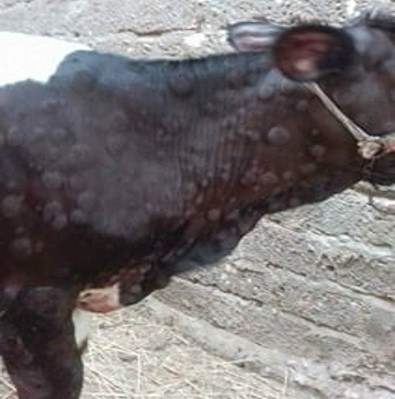Lumpy skin disease (LSD) in cattle
Prof. Mohamed El-Diasty, AHRI, Egypt
Lumpy skin disease (LSD) is a highly host-specific viral disease caused by lumpy skin disease virus (LSDV), a virus from the family Poxviridae, genus Capripoxvirus. The Morbidity rate varies between 10- 20%, and mortalities reach to 1-5% are considered usual. The primary route of transmission is the arthropod vector, and milk from an infected cow acts as a source of infection to its calf. Infected bulls can excrete the virus in the semen; however, spread infection via infected semen is not common. Fever and marked depression, and large skin nodules are the characteristic clinical picture. Infected animal characterized by nodules spreads all over the body. These nodules are round, raised, and painful. They involve the cutaneous skin and the mucosa of the respiratory tract, eyes, and genital tract. Nodules also appeared on the muzzle, buccal mucous membranes, nasal cavity, udder, and teats. The presence of edema on the legs and brisket was reported; additionally, the regional lymph nodes become enlarged. Secondary infection occurs and causes suppuration and sloughing of nodules due to necrosis, resulting in hard, raised areas separated from the surrounding skin forming ulcers, which heal and scar. Aborted foeti from severely infected animals may have the same lesions on the skin. The disease is endemic in most African countries, and it has spread rapidly through the Middle East, the Balkans, Caucasus, Russia, Kazakhstan and southeast Europe since 2012. Several outbreaks have been reported in Egypt. Its occurrence was confirmed between 1988 and 1989 and again in 2006, 2011, 2014, 2018 and 2020 in Egypt, despite the mass vaccination using the sheep pox vaccine. During severe outbreaks, cases of LSD in buffaloes were seen. In 2020, the Neethling vaccine was introduced to the Egyptian field as a new tool for the prevention and control of LSD. More investigations are required in Egypt to explore the disease in buffaloes and implement a suitable vaccination and control strategy.